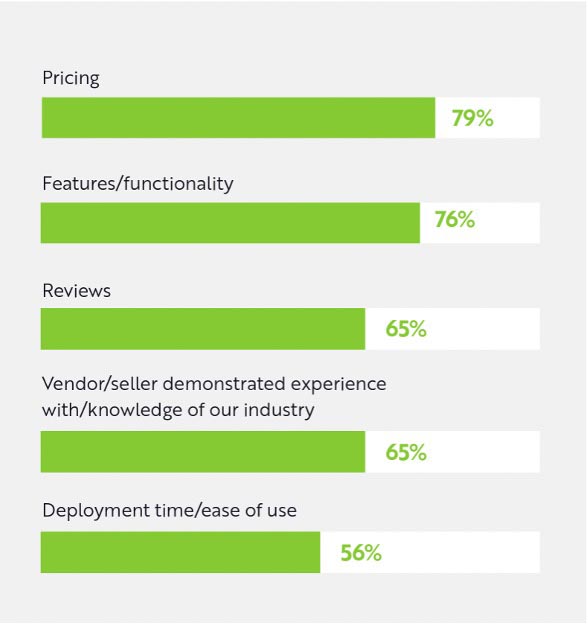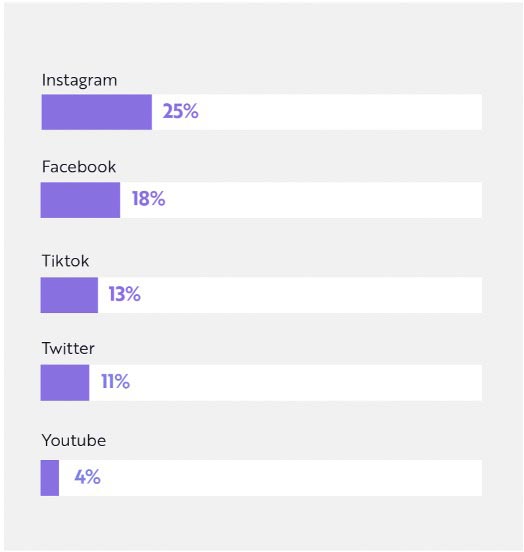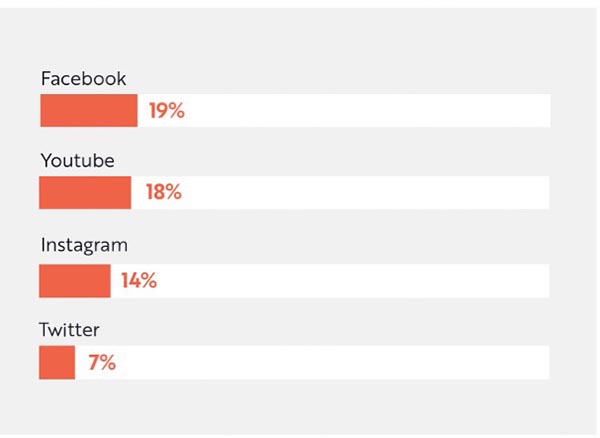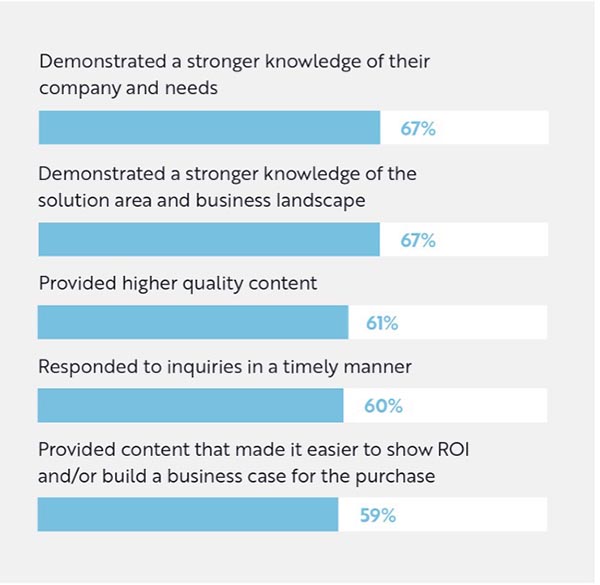The old saying, “Content is king” has never been more true, especially in the B2B world. According to DemandGen’s 2023 B2B Buyer’s Journey survey, 25% of B2B buyers say they are cutting their budgets, yet 19% say they are spending more time researching decisions and 27% say their buying journeys involve more people. This puts them tricky position. How do they spend less money and yet do more work? The answer is to have the seller do more of the work for them.
That, indeed, might be the takeaway from this year’s survey: Buyers are increasingly pressured and increasingly relying on their vendors to streamline their journeys and make it as easy as possible to do business with them. Buyers want more information, more details, and increasingly personalized communications. They want their vendors to do their homework.
What Is Today’s Buying Journey?
So what does today’s buying journey look like? According to the 300 buyers surveyed by DemandGen, it still looks like 70%-80% of that journey happening behind the scenes—long before buyers reach out to (or are willing to be approached by) a salesperson. The journey looks like this:
- Conduct anonymous research on potential solutions.
- Collect preliminary information on pricing/costs.
- Bring in other team members.
- Evaluate solutions.
- Seek input from industry analysts/consultants.
- Seek input from peers/existing users.
- Accept outreach from vendors and engage in calls/demos.
- Speak to and engage in person with a sales representative from the selected vendor.
While the overall process is familiar, there are some details of the journey that are changing. B2B buyers do indicate that they are doing some things differently:
- 31% say they are spending more time researching.
- 38% are doing more detailed ROI analyses.
- 24% are spending more time using social media during the research process.
- 23% are relying more on peer recommendations/review sites.
Although the research net is cast wide, the number one place B2B buyers say they look for competitive information is on the seller’s own website. There,
- 66% want easy access to pricing and competitive information.
- 63% want easy access to relevant content that speaks directly to their company.
- 55% want communication that speaks directly to and demonstrates expertise around the needs of their industry.
So keep that website up to date!
What Do They Want to See?
What are buyers most interested in seeing? Not surprisingly, price comes in on top (79%), followed by features and functionality (76%). Next, however, before vendor expertise or ease of use, is customer reviews (65%). Here it is again—buyers trust each other more than they trust their vendors.

Source: “B2B Buyer’s Journey” (DemandGen 2023)
Where Else Do They Look?
Of course, a vendor’s website isn’t the only place B2B buyers look for information. Where else do they seek information to help make their purchase decision?
Nearly three-quarters (71%) say they notice digital ads like those showing up in their social media feeds, as banner ads, and even CTV. While this percentage has not changed 2022-2023, DemandGen did that these digital ads are creating more of an impact than in the past. The 2023 survey found that 44% of respondents said advertisements positively impacted their view of a company, compared to just 33% in 2022. Not surprisingly, this varied by age demographic. Fifty-four percent (54%) of Millennial and Gen Z buyers were positively influenced by ads, while 36% of Boomers and Gen Xs said the same.
Younger buyers are more likely to be influenced by social media ads, while older buyers tend to be more influenced by banner ads on publications and websites.
Which social media platforms have the most influence? For younger generations, it’s Instagram, Facebook, and TikTok:

Source: “B2B Buyer’s Journey” (DemandGen 2023)
For older generations, it’s Facebook, YouTube, and Instagram:

Source: “B2B Buyer’s Journey” (DemandGen 2023)
“The most interesting differences are in video consumption,” notes the report. “A chunk of Millennials pointed to this format as a key channel, while no Boomers did. Similarly, YouTube had varying levels of influence. This demonstrates that while video advertisements are important for all buyers, the formats and channels those videos are delivered on must vary as well.”
How to Best Demonstrate Value?
In winning B2B buyers’ hearts and minds, what is the best way for companies to demonstrate their solution’s value? More than eight in 10 survey respondents (81%) said content had a significant impact on their buying decisions. When asked their top-five reasons for selecting the winning vendor, they cited demonstrated knowledge, high-quality content, and content that makes it easier to show ROI and/or build a business case.

Source: “B2B Buyer’s Journey” (DemandGen 2023)
But ultimately, it’s not the content that opens B2B buyers to a sales contact. It’s the willingness of the vendor to put together a customized approach when reaching out to them. Buyers want to know that the sales rep trying took the time to research their company before picking up the phone.
The top three things making B2B buyers more likely to accept a sales outreach?
- Customized outreach (57%)
- Sequenced messaging (16%)
- Personalized video (11%)
Notes the report, “Although all buyers preferred highly customized outreach, younger generations were more likely to embrace video outreach, while older generations were drawn to customized landing pages. Additionally, both demographics indicated that the sales reps’ knowledge influenced their decision (69%), meaning it’s imperative for sales reps to connect with buyers and demonstrate a deep understanding of their company.”
Effort Carries Year Over Year
Is it a lot of effort to put in to reach today’s B2B buyers? You bet. But it can be worth it. Not only to get the sale this year, but perhaps even the year after. DemandGen found that, for B2B buyers, the importance of having prior experience with the vendor jumped from 25% in 2022 to 40% in 2023.
The report concludes, “This demonstrates that in times of uncertainty and tightening budgets, buyers are doubling down on tried-and-true solutions.”










Discussion
Join the discussion Sign In or Become a Member, doing so is simple and free